I had planned to take my older daughter on her first overnight hike during this weekend visit to Mt Hotham for our ski club 50th anniversary celebrations. I wrote about the first day’s activations in a previous blog post here.
Mt Feathertop is a challenging first hike, but she’s fit and strong for her 11 years and we went with my brother and his family whilst leaving my younger daughter with my wife back at the lodge. It goes without saying that I was not going to leave the radio gear behind!
Any hike to Mt Feathertop needs careful consideration of the weather as it is the second highest peak in Victoria and extremely exposed. We were in luck with fine weather forecast for the two days we planned to be out there. However we took plenty of clothing and warm sleeping bags.
All up my pack was about 18kg including a couple of kg of radio gear. My daughter carried about 8kg, but I think I could have loaded her up further as she comfortably lead the way for most of the hike!
We set off from the Great Alpine Road at Diamantina Hut near Mt Hotham and walked the Razorback. This is an undulating path that is mostly above the tree line, but is quite rocky in places.
As you can see, the weather was excellent apart from a cold wind that saw us layer up quickly. The whole Razorback was burnt in the 2013 fires and there are blackened trees everywhere. Re-growth is underway, but it will be some years before the snow gums are back to their previous size.
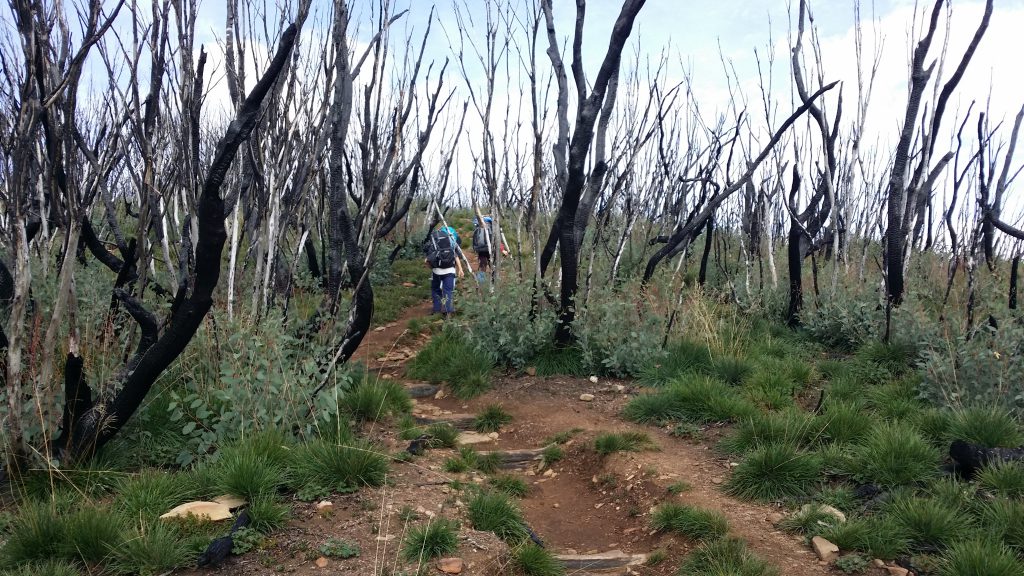
On the Razorback track through areas burnt in the 2013 bushfires – re-growth is occurring, but still lots of black trees everywhere
Whilst the weather is getting cooler, there are still snakes around and we came across this one sunning itself in an inconvenient spot (a Red-bellied Black snake)! It was quite lethargic due to the cool day and wasn’t interested in getting out of the way, so we climbed past it at a respectful distance.
We hiked to Federation Hut where we planned to spend the night, set up tents and unloaded packs before the ascent to the summit. It’s about 1.7km and half an hour from Federation Hut to the summit (carrying only radio gear now!)
The peak of Mt Feathertop is very bare and quite small. I’d been there a couple of times in the past and knew that there would be nothing to attach a squid pole to, so I’d packed some guys and titanium nail-pegs to help with the setup (the ground is very rocky). This worked well with only two guys needed with a slight lean and the wind holding the pole up nicely.
Thankfully, the wind was only gentle and not too cold, so I was reasonably comfortable working the pileup. This time I had 19 contacts including two S2S with Peter VK3PF on VK3/VT-030 and Mark VK3ASC on VK3/VE-233. Towards the end of the session I was hearing some European stations starting to come in, but it was starting to get cold and I wanted to be back at the camp before dark, so didn’t stay to try and work any.
Back at camp, the wind picked up and it was very cold as the sun set. After a hot dinner in Federation Hut with a group of scouts that were also staying the night, we retired to warm sleeping bags and the sound of wind buffeting the tents. Later in the night, the wind died down and the following morning was still with heavy dew on everything. The walk back was a bit quicker than the previous day and we were back at Mt Hotham in time for a late lunch.
The total walk was 24.5km over 2 days – hard, but most enjoyable. At the bottom of this blog I’ve included the walking stats, GPS track and profile that may assist others planning the hike. Here’s a few pointers for anyone else wanting to activate Mt Feathertop:
- The weather can be extremely changeable and it can snow at any time of year, so take plenty of warm clothing including winter gloves, beanie, neck warmer etc
- There is usually water in the tank at Federation Hut, but it is untreated, so some form of sterilization is a good idea. There are two natural water sources within about 20 min walk of the hut (see Parks Victoria map marked “Spring”)
- The peak of Mt Feathertop is very rocky and bare, so standing up a squid pole of any size will need guys and strong pegs
- The camping spot at Federation Hut is excellent and there is a long drop toilet there too
- It is possible to do Mt Feathertop as a day hike if you are fit, but it is a LONG walk.
Walking stats
Diamantina Hut to Federation Hut:
Federation Hut to summit and return:
Federation Hut back to Diamantina Hut:
GPS track and profile
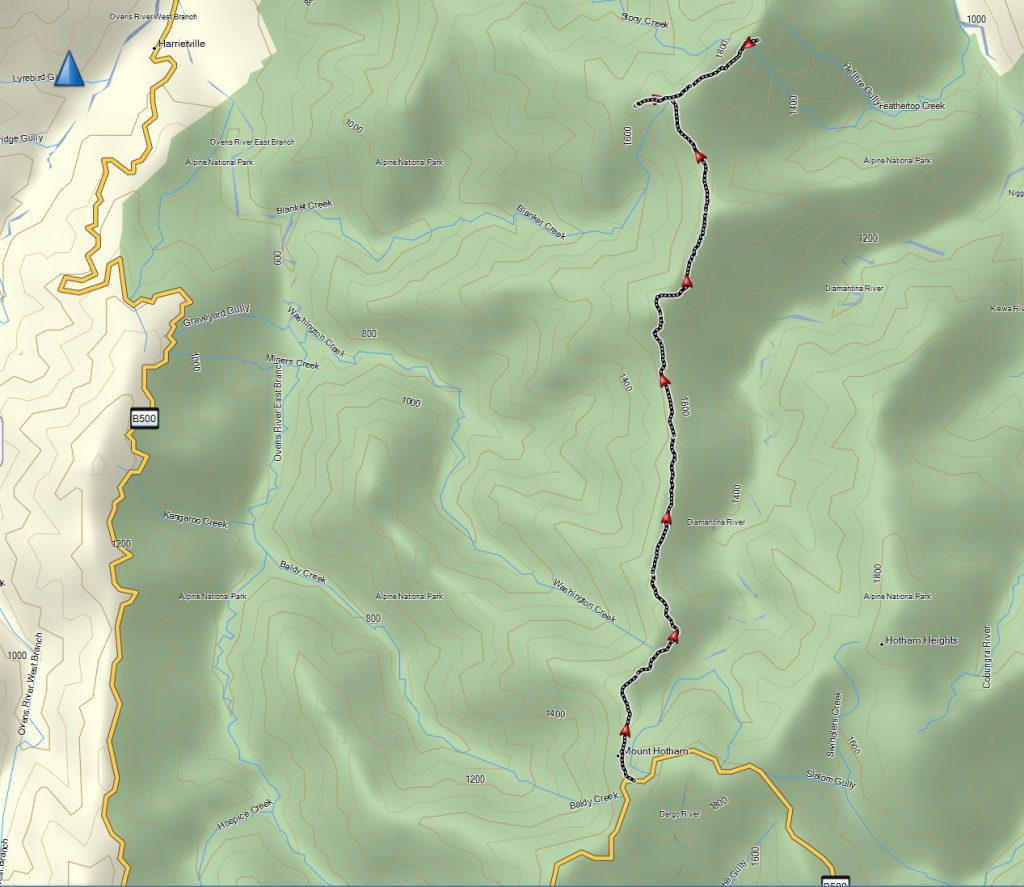
This is the full track from Damantina Hut to Federation Hut, Mt Feathertop and return (note the errors in the map locations for Mt Hotham and Hotham Heights!)
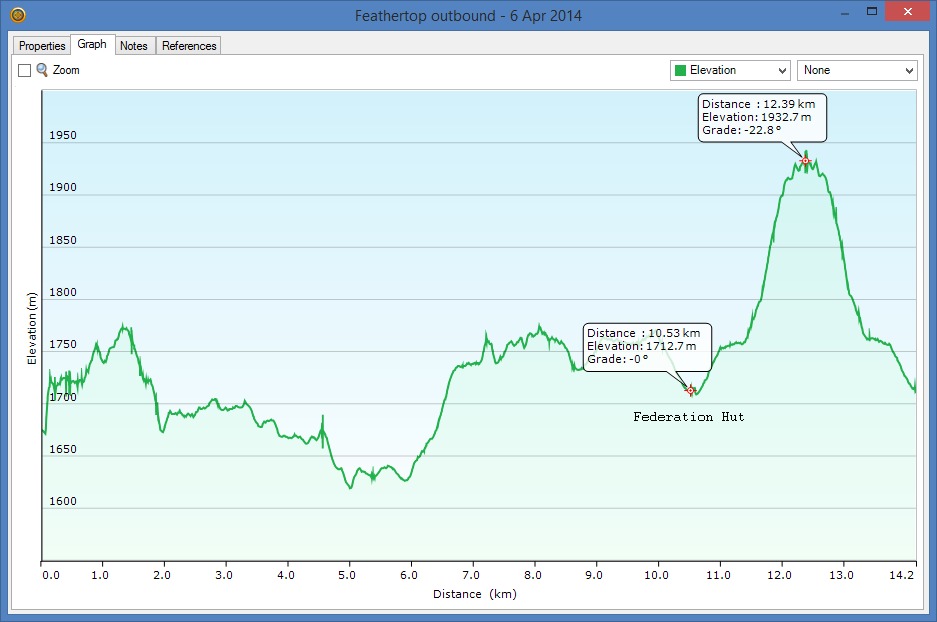
Elevation profile from Diamantina Hut to Federation Hut, up Mt Feathertop and back to Federation hut

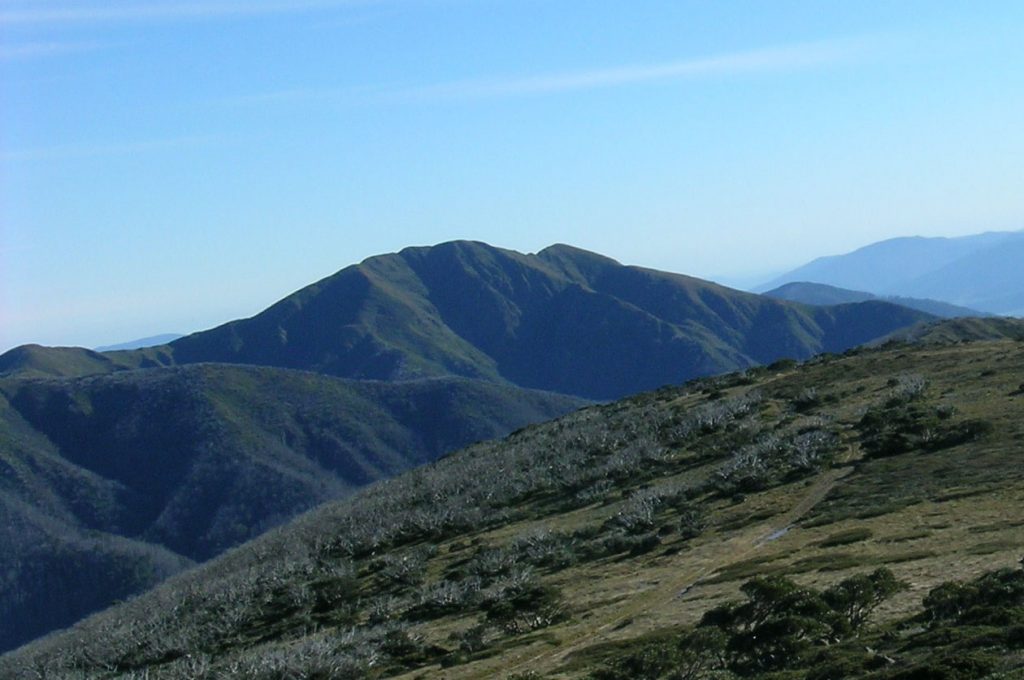
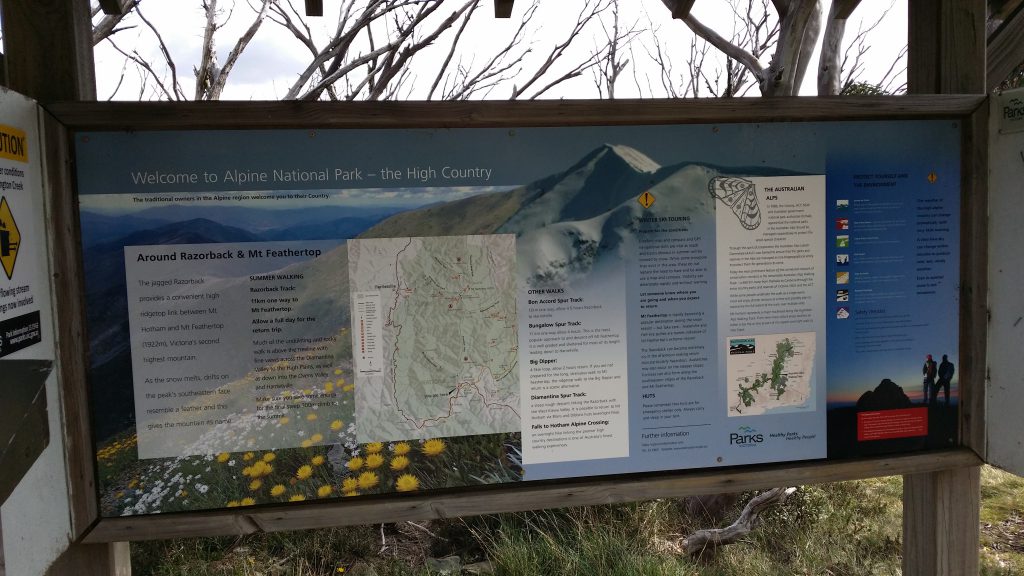
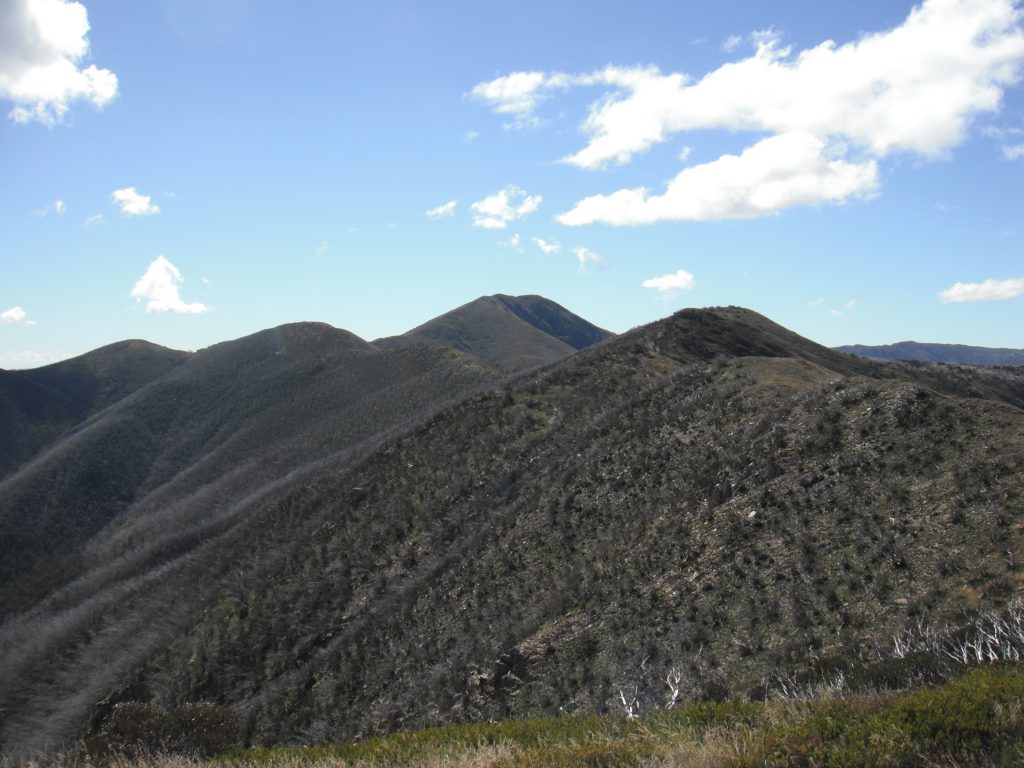
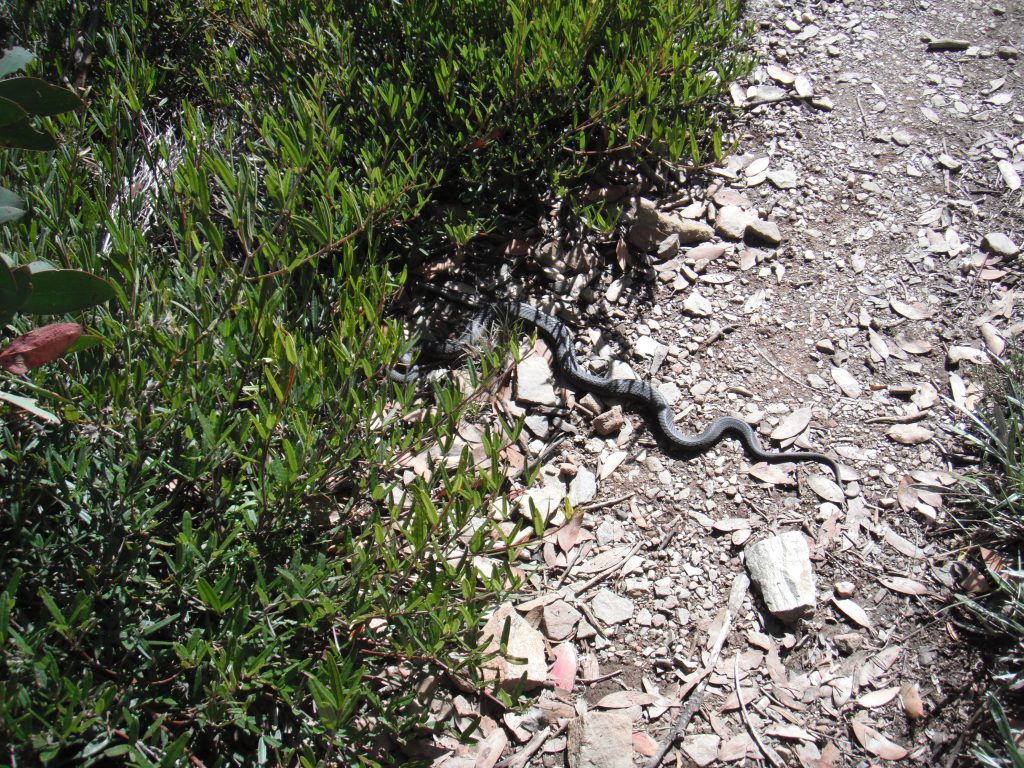
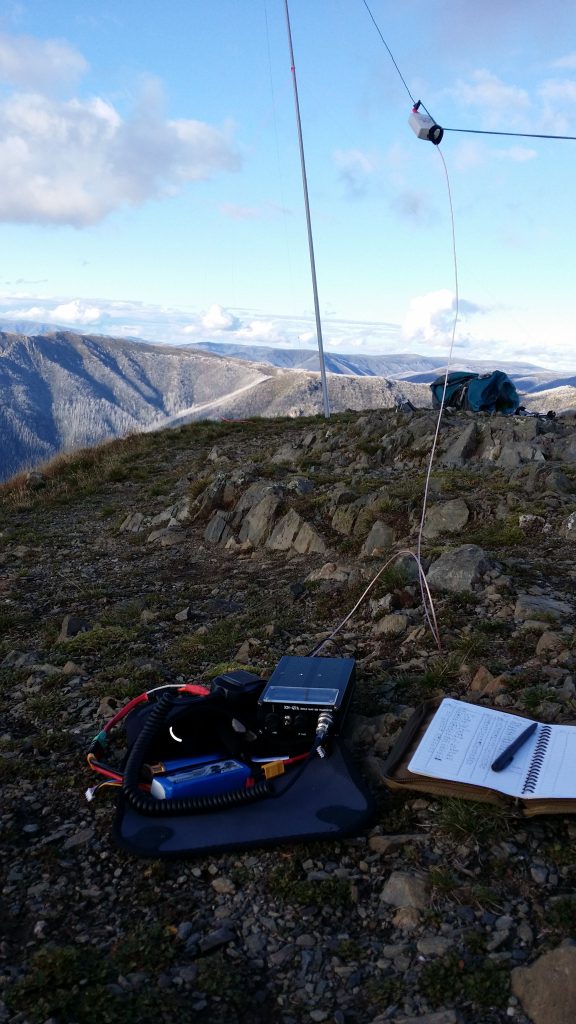
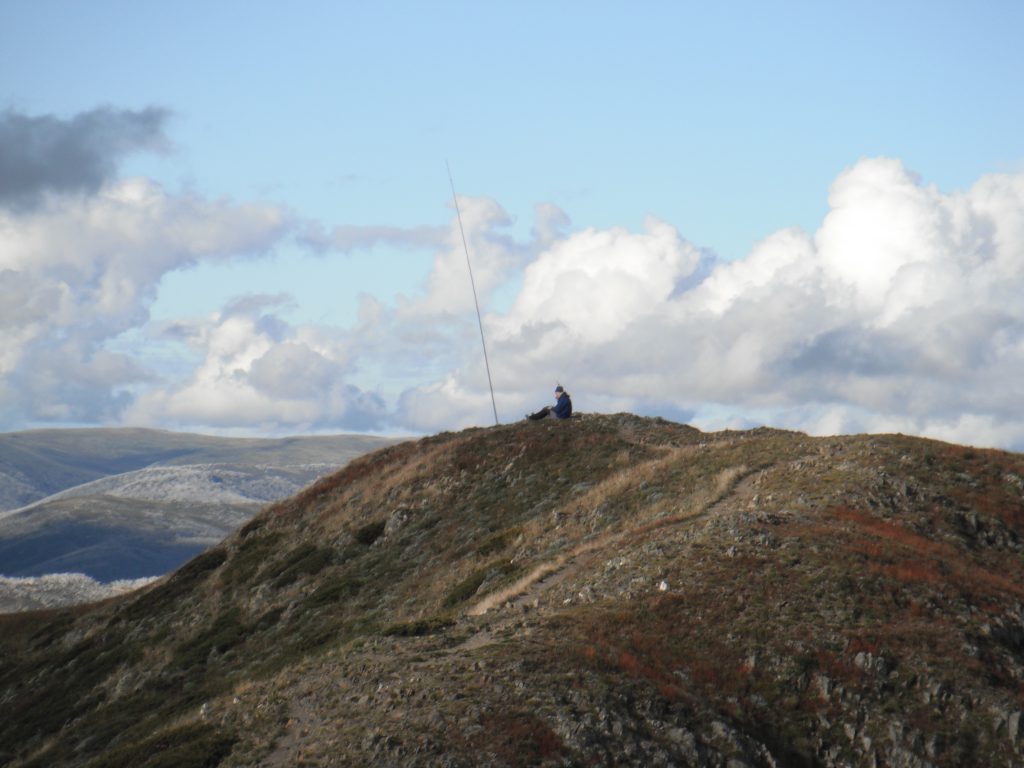
Pingback: Blue Rag Range and VK3/VE-024 - 5 April 2014 | VK3IL BlogVK3IL Blog
Looks like a great adventure.
Good to see you left the snake to itself.
What are you using for a GPS and software ?
Allen
VK3HRA
Yes, it was a lot of fun taking the kids out there – the excitement of sleeping in the bush, cooking on an alcohol stove and eating by torch light. It was also the first time they’d seen a snake in the wild and so useful to teach them respect for dangerous wildlife.
The GPS is a Garmin Oregon 450T and I’m using Garmin Basecamp as the software. Seems to work fine. In practice the GPS is mostly used to log the track and occasionally is useful to resolve “uncertain of position”!